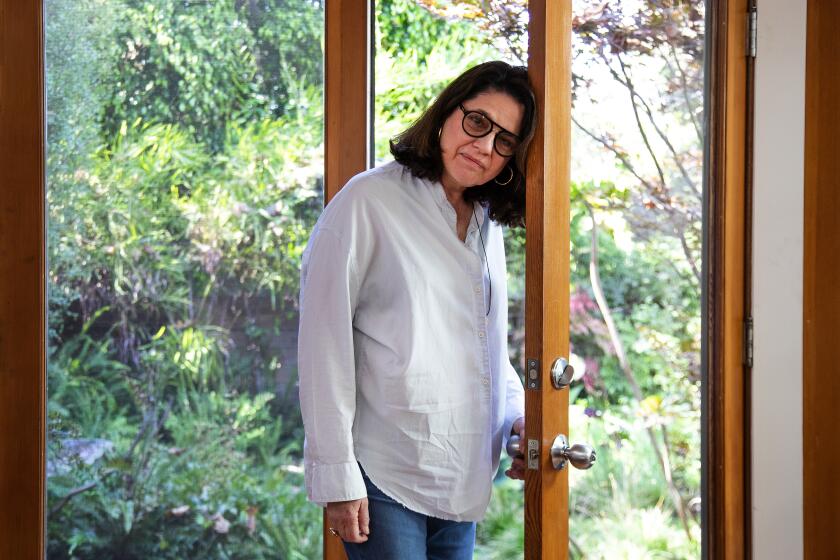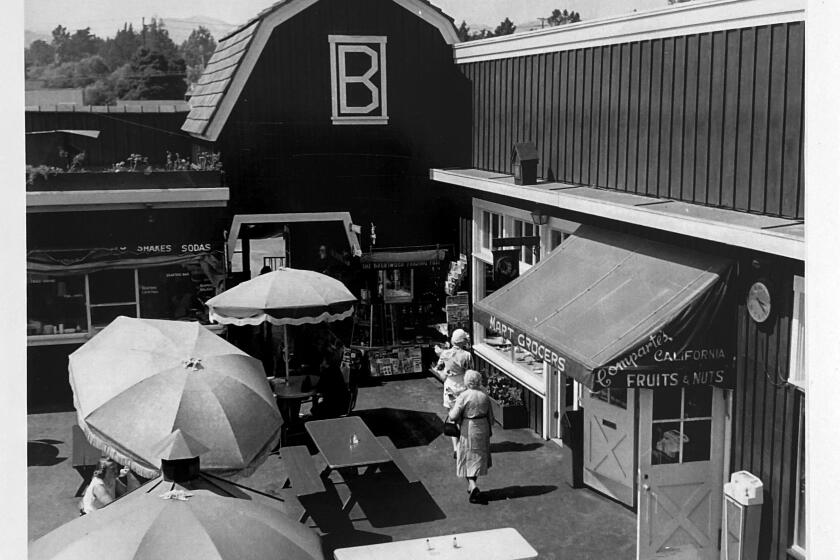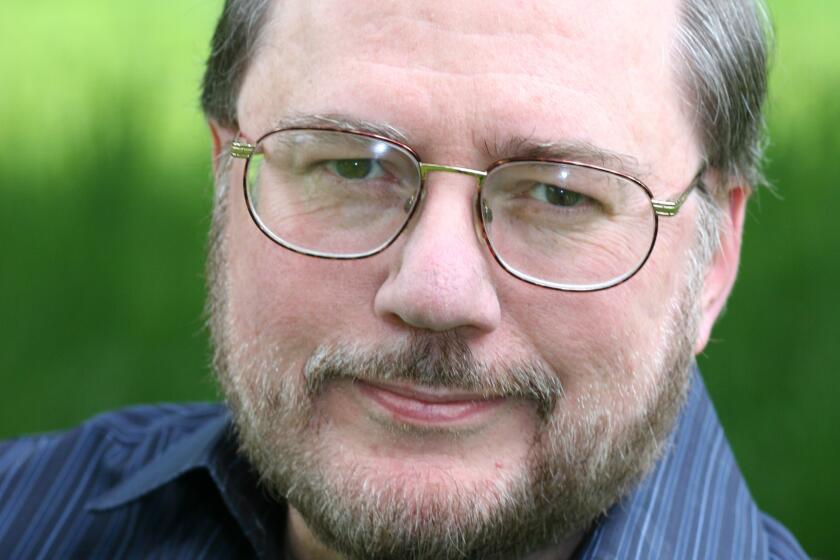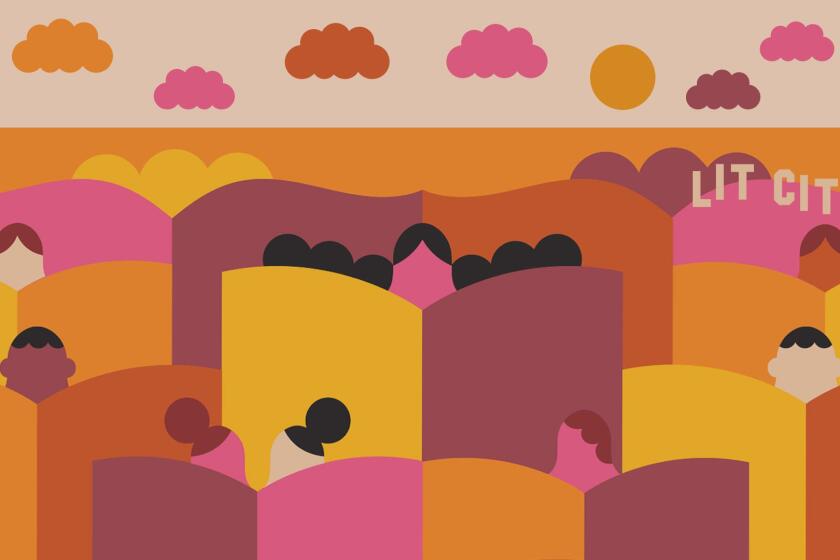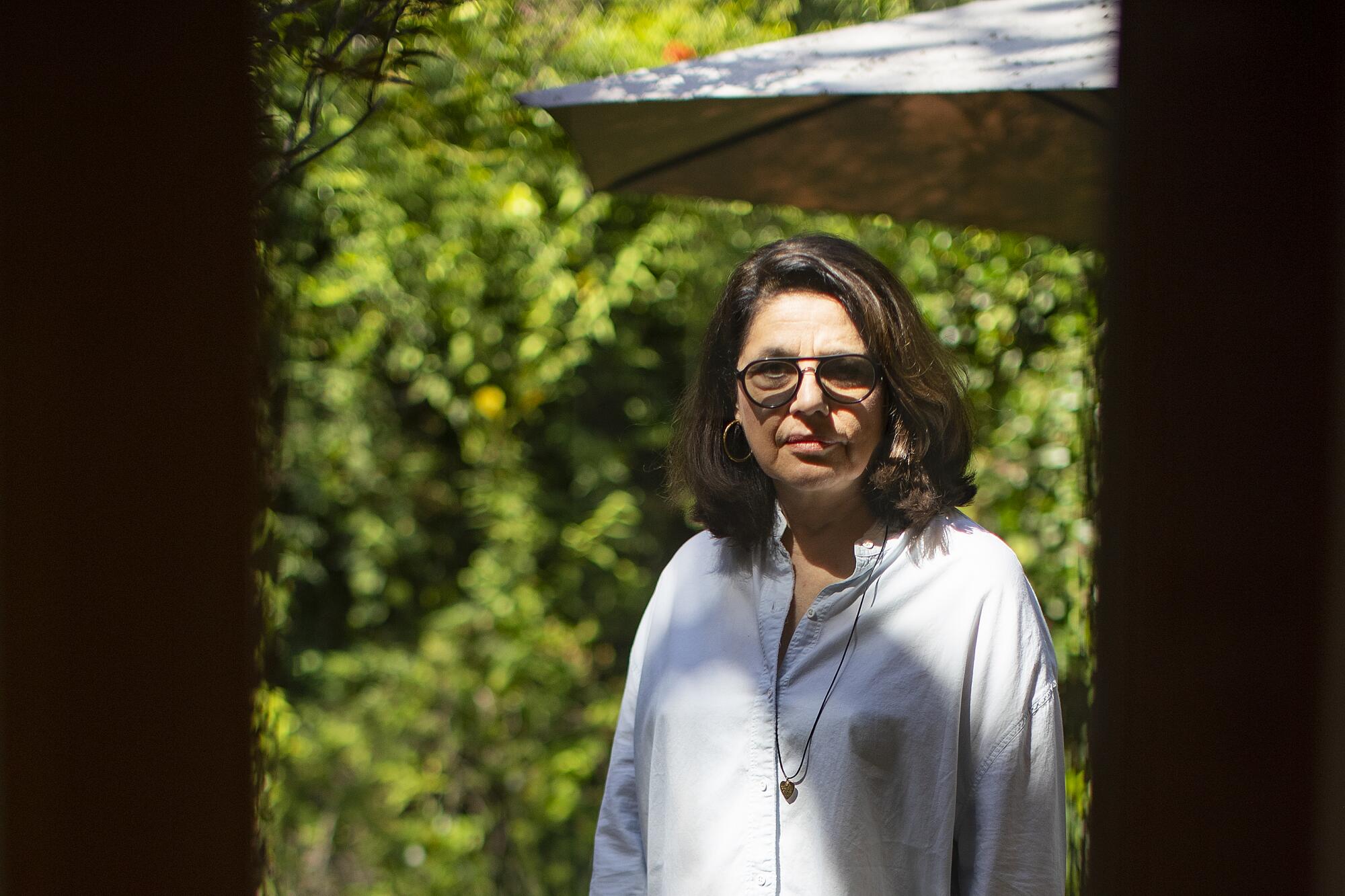
- Share via
On the Shelf
Künstlers in Paradise
By Cathleen Schine
Holt: 272 pages, $28
If you buy books linked on our site, The Times may earn a commission from Bookshop.org, whose fees support independent bookstores.
The novelist Cathleen Schine feels comfortably ensconced in Venice, nestled in a Craftsman bungalow on a pedestrian-only street with her wife, Janet Meyers. But it took her quite a while to get settled on the West Coast. Schine was a New Yorker for decades, and though Meyers works in L.A. as a film producer, they hopscotched back and forth. The red-eye commute couldn’t last forever.
“I’d been sort of bicoastal for 20 years, while my kids were still in school,” Schine says, speaking from her home not far from Abbot Kinney Boulevard. “At a certain point, I realized that I was no longer really excited by all the excitement of New York.”
After her mother died in 2020 and the COVID-19 pandemic sent everyone home, Schine began to think about a novel that would portray a different kind of New Yorker growing enchanted by the neighborhood — and not just the Venice of today but also the lower-slung version of decades past. Before long, Schine’s story opened out onto an often-overlooked history: the World War II era when refugee artists including Thomas Mann and Arnold Schoenberg made Los Angeles a kind of Mitteleuropa in exile.
“The Grammarians” novelist Cathleen Schine says she was aiming for “something funny and kind of separate from the real world.”
“Künstlers in Paradise” brings 20-something Julian Künstler to Venice as a more contemporary sort of expat. His nonagenarian grandmother and her devoted housekeeper, Agatha, are housebound by the pandemic, and Julian’s parents send him west — to help his grandmother but also perhaps to end his aimless dithering on the East Coast.
“I know a lot of these young men who are at a somewhat awkward stage, like Trollope’s hobbledehoy, caught somewhere between childhood and adulthood,” says Schine. “My love for that stage comes from raising two wonderful young men, although I’m pretty careful not to write about them. I don’t want to steal all of their material!”
The story opens, however, in 1939, when 11-year-old Salomea “Mamie” Künstler — Julian’s grandmother — lands in Los Angeles with her family. The sophisticated Künstlers (German for “artists”) have fled Hitler’s Vienna and arrive just as the Nazis invade Poland.
On the day the world changes, Mamie takes in a new world through her car window — a world that today, in many ways, no longer exists. “People just did what they wanted back then,” Schine explains. “There were houses with turrets, places designed to look like castles or farmhouses, and you never knew what would be on which corner. And you had all those places that were completely fanciful, like the Brown Derby, built in the actual shape of a hat.”
Then there are Mamie’s fellow emigrés — the künstlers of the Pacific. “All these brilliant people, conductors and composers and writers and artists, ended up in L.A., and I was completely fascinated reading about them,” says Schine. “But I didn’t want to write a straight historical novel that might become very fussy.” Besides, “one of the wonderful things about writing novels is you can do the research until you’ve stopped understanding or gotten bored.” (Schine pursued a master’s degree in medieval history at the University of Chicago but dropped out and “skulked away” to New York. “I was the worst historian,” she says.)
Did authors Thomas Mann and Theodor Adorno have a tiff at the Brentwood Country Mart? Given the intellectual firepower of postwar Brentwood, probably.
She also came late to L.A.’s artistic legacy. For too long, Schine admits, she was “a prejudiced New Yorker who felt that L.A. was a cultural wasteland and that it had no history. Wrong! But what wound up interesting me even more was that when these people came from Europe they didn’t always experience success. Schoenberg, Expressionist composer, thought of himself as one of the most important figures in modern music, but in L.A. he can’t even get arrested, let alone get famous.”
The Austrian did end up teaching at USC and UCLA before there were even standalone music departments, influencing generations of composers. He appears in Mamie’s stories, as does Mann, whose beautiful Midcentury Modern house remains an important part of the cityscape.
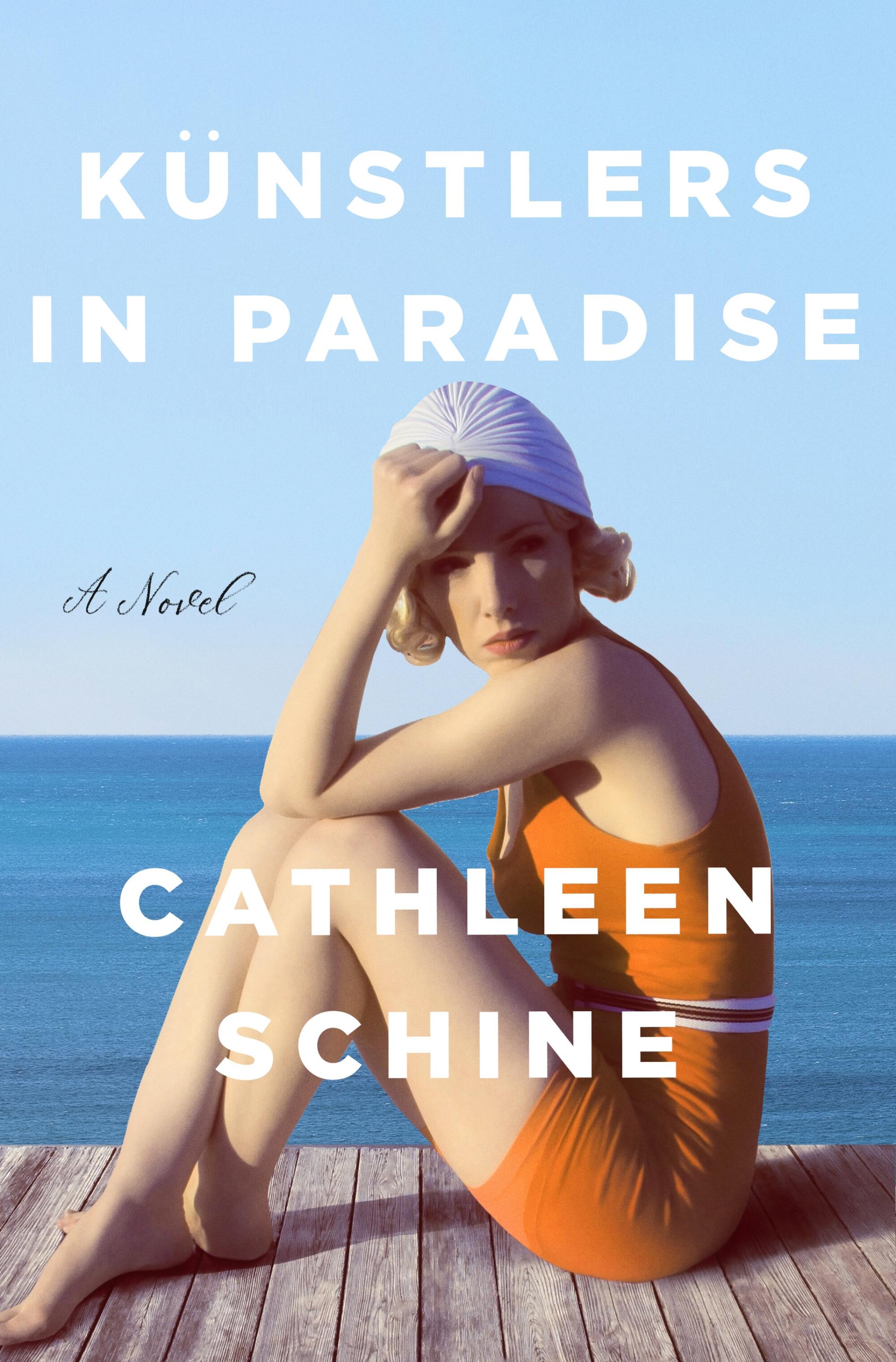
The book establishes a subtle parallel between Schine’s sets of refugees — those in the 1930s watching Europe burn from afar and those weathering the pandemic as it ravages the East Coast.
“One day, after isolation began, I was sitting in our Venice garden, smelling the jasmine and watching hummingbirds and butterflies,” Schine recalls. “It was very quiet, no cars on the roads, no planes in the skies, a sort of eerie peacefulness. Meanwhile, when I would talk to people in New York there were sirens in the background, day and night.”
She pauses for a moment. “I’m not trying to compare the pandemic to the Holocaust. They are completely different. But I do know that guilt of exile. The feeling when you’re safe and the world you love is blowing up and falling apart and dying.”
Mamie, like a 90-something Scheherazade, reels Julian in again and again with her stories, knowing just how much to tell him to keep him interested and by her side. She doles out photographs and anecdotes with the panache of a high-end pusher, saving one of the most remarkable for the end: a story about reclusive Greta Garbo, whom she and her grandfather meet on the beach.
Rupert Holmes has written hit songs, a Broadway smash, a TV show and mystery novels including ‘Murder Your Employer.’ His work is still about ‘escape.’
“Künstlers” is Schine’s 12th novel, but she admits that, with its time shifts and deliberate unfurling, it was particularly tricky to calibrate. “I don’t outline my books,” she says. “I’m just thinking, ‘What happened to Mamie next? How will Julian react?’ I do think that the sort of gradual layering of various details became part of the structure.”
Her loose process has its advantages. It “always” results, she says, in “a sort of peripheral character who ends up being my favorite.” In this book, that’s Agatha, whose origins are hazy but who never lets her irascible employer down and always has a handbag dangling from her forearm. “I had no idea what was going on with Agatha until the end, but she became more and more important to me as the manuscript progressed. She could have been a throwaway character. Instead, she’s more of a load-bearing wall.”
Schine is not the type of writer to schedule herself a minimum page count per day; she can go three months without writing a word. But she is thinking about a book, “sort of a ‘Buddenbrooks’ thing” (referencing Mann’s masterwork, written before his stint in the Pacific Palisades). Schine’s homage of sorts is about a mercantile family in Bridgeport, Conn., where she grew up and where her father owned a lumber company.
“It’s very close to home and a lot of it will be based on my family’s fortunes,” she says. “I’ll see if I can pull it off.” Meanwhile, she’s trying, after two decades of commuting and three years of isolating, to learn more about the city she now calls home. “I had to train myself to read the L.A. Times instead of the East Coast papers. It’s only been a few years. Old habits die hard!”
A guide to the literary geography of Los Angeles: A comprehensive bookstore map, writers’ meetups, place histories, an author survey, essays and more.
She confesses that she only recently learned the exact coordinates of the San Fernando Valley. “No wonder I got lost all the time! When I do leave this neighborhood, it’s Google Maps, check it twice. It’s always an adventure. It’s taken me a long time to feel like I live here.” But she’s studied up. “I do now.”
Patrick is a freelance critic, podcaster and author of the forthcoming memoir ”Life B.”
Cathleen Schine will be in conversation with Michelle Huneven at Vroman’s in Pasadena on March 21 at 7 p.m.
More to Read
Sign up for our Book Club newsletter
Get the latest news, events and more from the Los Angeles Times Book Club, and help us get L.A. reading and talking.
You may occasionally receive promotional content from the Los Angeles Times.
